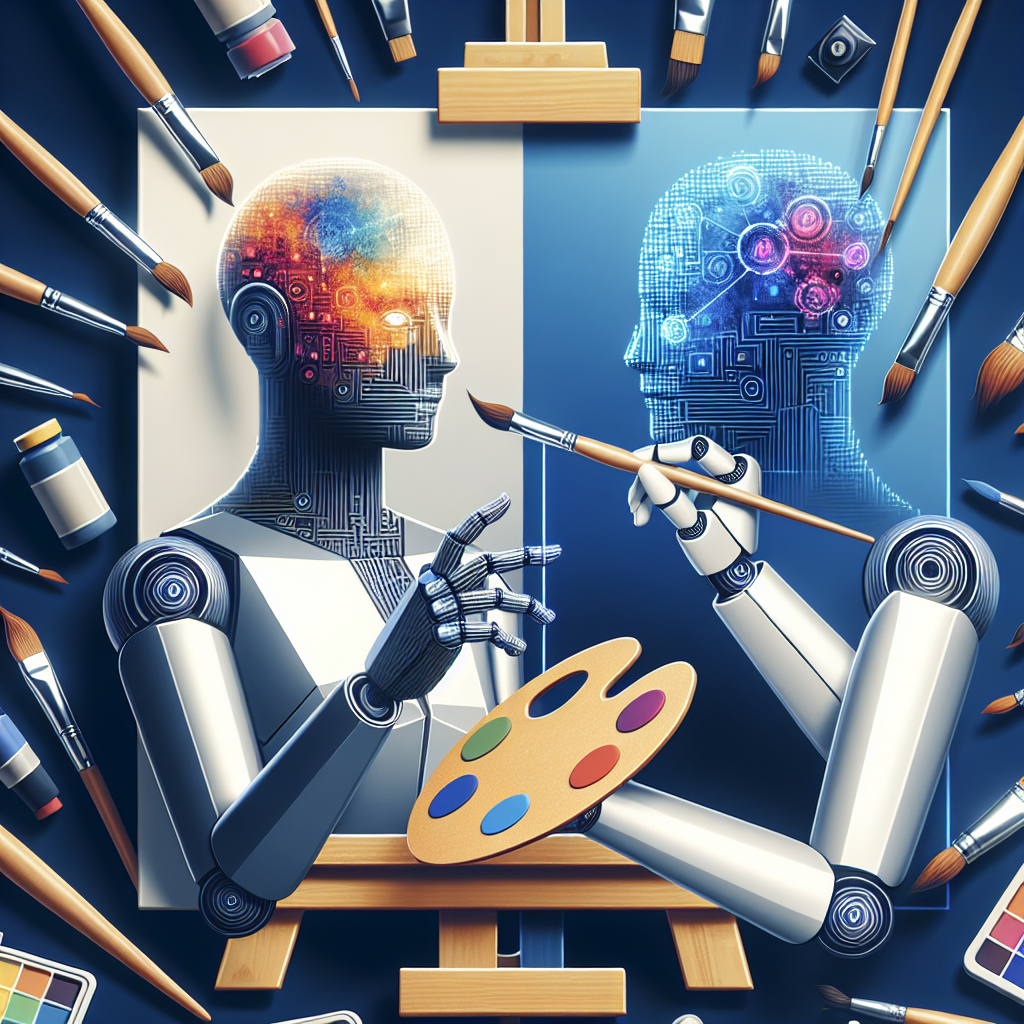The Creative Machine: How AI is Redefining the Role of Artists
Artificial Intelligence (AI) has been making significant strides in recent years, revolutionizing various industries and transforming the way we work and live. One area where AI is making a particularly big impact is in the realm of art and creativity. From generating music and paintings to writing poetry and designing fashion, AI is redefining the role of artists and challenging traditional notions of creativity.
AI-powered tools and algorithms are now capable of producing art that is indistinguishable from that created by humans. This has led to a growing debate about the role of AI in the creative process and the implications it has for artists and the art world as a whole. In this article, we will explore how AI is reshaping the creative landscape and what it means for the future of art.
The Rise of AI in Art
AI has been used in various artistic endeavors for decades, but recent advancements in machine learning and deep learning have greatly expanded its capabilities. One of the key areas where AI has made significant strides is in the generation of visual art. AI algorithms can now create realistic images, paintings, and even sculptures that are virtually indistinguishable from those created by human artists.
One of the most famous examples of AI-generated art is the portrait of Edmond de Belamy, created by the French art collective Obvious using a Generative Adversarial Network (GAN). The portrait was sold at auction for $432,500, raising questions about the value of AI-generated art and the role of human artists in the creative process.
AI has also been used to generate music, with algorithms capable of composing original pieces in various styles and genres. From classical symphonies to pop songs, AI is blurring the lines between human and machine creativity, challenging our perceptions of what it means to be an artist.
In addition to visual art and music, AI is also being used to generate poetry, literature, and even fashion designs. The possibilities are virtually endless, with AI algorithms capable of creating art in a wide range of mediums and styles.
The Role of Artists in the Age of AI
As AI continues to advance and expand its creative capabilities, the role of artists is evolving. Many artists see AI as a tool to enhance their creativity and push the boundaries of what is possible in art. AI can be used to generate ideas, inspire new concepts, and even collaborate with artists in the creative process.
However, there are also concerns about the impact of AI on the traditional role of artists. Some fear that AI will replace human artists altogether, leading to a devaluation of creativity and originality. Others worry about the ethical implications of AI-generated art, such as issues of ownership, authorship, and authenticity.
Despite these concerns, many artists are embracing AI as a new medium for self-expression and innovation. By working alongside AI algorithms, artists can explore new creative possibilities and push the boundaries of what is considered art. AI can be a powerful tool for artists to experiment with new techniques, styles, and concepts, leading to a renaissance of creativity in the digital age.
FAQs
Q: Can AI truly be considered a creative artist?
A: While AI algorithms are capable of generating art that is indistinguishable from that created by humans, the question of whether AI can be considered a creative artist is still up for debate. Some argue that creativity requires human consciousness and intentionality, qualities that AI lacks. Others believe that creativity is a process of generating novel and valuable ideas, a task that AI algorithms are increasingly capable of performing.
Q: What are the ethical implications of AI-generated art?
A: The rise of AI-generated art raises a number of ethical questions, including issues of ownership, authorship, and authenticity. Who owns the rights to AI-generated art? Can AI algorithms be considered the authors of their creations? How can we ensure that AI-generated art is not used to deceive or manipulate audiences? These are just a few of the ethical considerations that need to be addressed as AI continues to reshape the art world.
Q: How can artists work alongside AI in the creative process?
A: Many artists are finding ways to collaborate with AI algorithms in the creative process. By using AI as a tool for inspiration, experimentation, and exploration, artists can push the boundaries of their own creativity and discover new possibilities in art. Some artists are even creating hybrid works that combine human and machine elements, blurring the lines between traditional and digital art forms.
In conclusion, AI is redefining the role of artists and challenging traditional notions of creativity. From generating music and paintings to writing poetry and designing fashion, AI is pushing the boundaries of what is possible in art. While there are concerns about the impact of AI on the art world, many artists see AI as a tool for innovation and self-expression. As AI continues to advance, it will be fascinating to see how artists and AI algorithms collaborate to create a new era of art and creativity.

